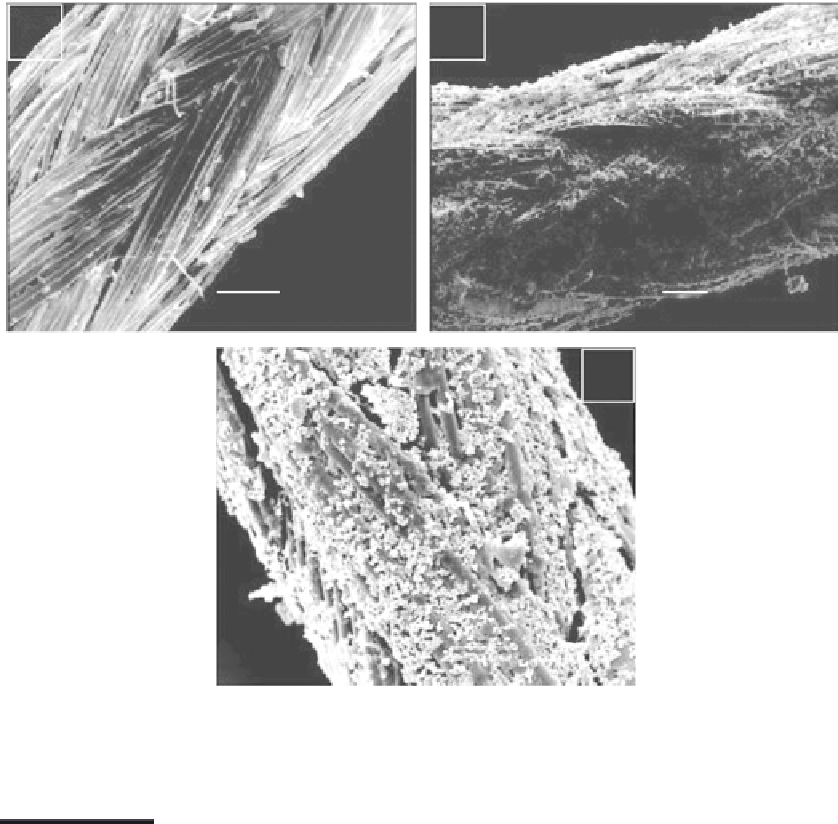Biomedical Engineering Reference
In-Depth Information
(a)
(b)
15 KV ×250 100 µm 000000
20 KV ×150 100 µm 000000
(c)
20 KV
FIGURE 9.18
SEM of Mersilk
®
sutures (a) uncoated, (b) slurry-dip-coated with AgBG glass powders and (c) 45S5 Bioglass
®
powders. (From Pratten et al.,
J. Biomater. Appl.
, 19(1), 47-57, 2004. With permission [50].)
NanoscopicSurfaceModificationofBioactiveGlasses
Materials composed of one or more engineering nanocomponents/surface features
(1-100 nm) are called nanomaterials [41]. They offer an exciting new possibility for medi-
cal device technology development. Possible applications include imaging and diagnosis,
anticancer therapies, drug delivery platforms, and gene therapy. It is expected that nano-
technology will revolutionize tissue engineering.
Nanotechnology can be used to engineer surfaces to:
• Significantly improve/control rates of bioactivity (
I
b
), resulting in faster tissue
integration/growth
• Create bioinspired nanoarchitectures mimicking ECM form and function
Bioinspired nanotechnological engineering coupled with bioactivity presents a new and
exciting strategy to potentially and significantly improve the in vivo performance of
implants to last the lifetime of the patient.

Search WWH ::

Custom Search